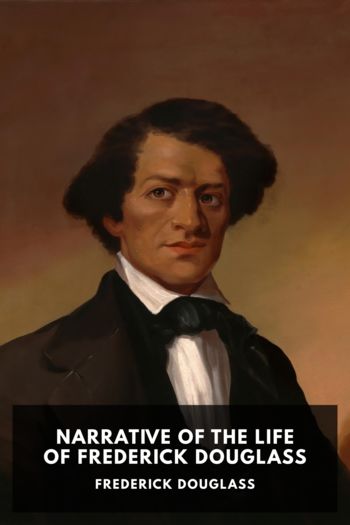The Autobiography of Ma-Ka-Tai-Me-She-Kia-Kiak, or Black Hawk Black Hawk (ebook reader android .TXT) 📖

- Author: Black Hawk
Book online «The Autobiography of Ma-Ka-Tai-Me-She-Kia-Kiak, or Black Hawk Black Hawk (ebook reader android .TXT) 📖». Author Black Hawk
Our women plant the corn, and as soon as they are done we make a feast, at which we dance the crane dance in which they join us, dressed in their most gaudy attire, and decorated with feathers. At this feast the young men select the women they wish to have for wives. He then informs his mother, who calls on the mother of the girl, when the necessary arrangements are made and the time appointed for him to come. He goes to the lodge when all are asleep, or pretend to be, and with his flint and steel strikes a light and soon finds where his intended sleeps. He then awakens her, holds the light close to his face that she may know him, after which he places the light close to her. If she blows it out the ceremony is ended and he appears in the lodge next morning as one of the family. If she does not blow out the light, but leaves it burning he retires from the lodge. The next day he places himself in full view of it and plays his flute. The young women go out one by one to see who he is playing for. The tune changes to let them know he is not playing for them. When his intended makes her appearance at the door, he continues his courting tune until she returns to the lodge. He then quits playing and makes another trial at night which mostly turns out favorable. During the first year they ascertain whether they can agree with each other and be happy, if not they separate and each looks for another companion. If we were to live together and disagree, we would be as foolish as the whites. No indiscretion can banish a woman from her parental lodge; no difference how many children she may bring home she is always welcome—the kettle is over the fire to feed them.
The crane dance often lasts two or three days. When this is over, we feast again and have our national dance. The large square in the village is swept and prepared for the purpose. The chiefs and old warriors take seats on mats, which have been spread on the upper end of the square, next come the drummers and singers, the braves and women form the sides, leaving a large space in the middle. The drums beat and the singing commences. A warrior enters the square keeping time with the music. He shows the manner he started on a war party, how he approached the enemy, he strikes and shows how he killed him. All join in the applause, and he then leaves the square and another takes his place. Such of our young men have not been out in war parties and killed in enemy stand back ashamed, not being allowed to enter the square. I remember that I was ashamed to look where our young men stood, before I could take my stand in the ring as a warrior.
What pleasure it is to an old warrior, to see his son come forward and relate his exploits. It makes him feel young, induces him to enter the square and “fight his battles o’er again.”
This national dance makes our warriors. When I was travelling last summer on a steamboat on the river, going from New York to Albany, I was shown the place where the Americans dance the war-dance, (West Point), where the old warriors recount to their young men what they have done to stimulate them to go and do likewise. This surprised me, as I did not think the whites understood our way of making braves.
When our national dance is over, our cornfields hoed, every weed dug up and our corn about knee high, all our young men start in a direction toward sundown, to hunt deer and buffalo and to kill Sioux if any are found on our hunting grounds. A part of our old men and women go to the lead mines to make lead, and the remainder of our people start to fish and get meat stuff. Everyone leaves the village and remains away about forty days. They then return, the hunting party bringing in dried buffalo and deer meat, and sometimes Sioux scalps, when they are found trespassing on our hunting grounds. At other times they are met by a party of Sioux too strong for them and are driven in. If the Sioux have killed the Sacs last, they expect to be retaliated upon and will fly before them, and so with us. Each party knows that the other has a right to retaliate, which induces those who have killed last to give way before their enemy, as neither wishes to strike, except to avenge the death of relatives. All our wars are instigated by the relations of those killed, or by aggressions on our hunting grounds. The party





Comments (0)